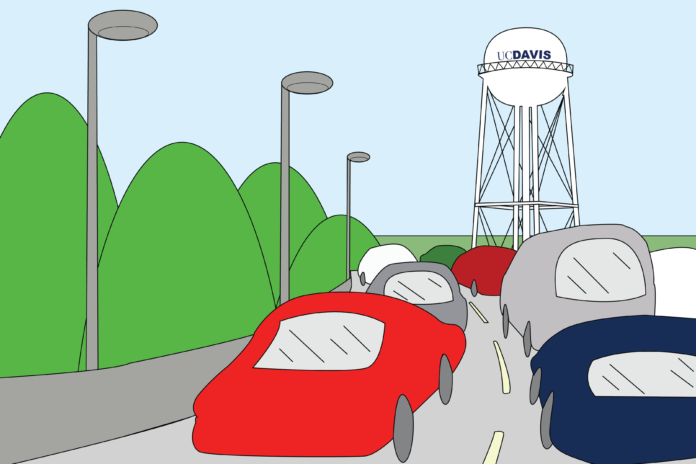Why we all benefit from communities that prioritize pedestrians over cars
By NADIA ANEES — nsanees@ucdavis.edu
When I reflect on what I’ll miss the most after graduating from college, what comes to mind is the word “closeness.” I’m living closer to my friends and peers than ever before. I can go just downstairs to ask my friend for some sugar to bake cookies. I bump into friends on the way to my design studio class. I am within walking distance of basically anything I need: the gym, campus, library, grocery stores, coffee shops, friends’ homes, scenic walking paths and more.
Coming to UC Davis for college has been the first time in my entire life that I’ve felt a strong sense of place. As a senior, I definitely feel anxious considering post-grad life. I will, all of a sudden, be far away from the friends and spaces that have felt like home. This anxiety stems from the fact that, for me, college has been my very first exposure to living in a tight-knit, walkable community.
A walkable city is a city designed to prioritize pedestrians over cars. This environment facilitates face-to-face interactions and forces us to really learn our surroundings.
Having grown up in Sunnyvale, a large city in the San Francisco Bay Area that is heavily car-dependent, living near campus in Davis for the last few years has shown me the numerous benefits of walkable communities. I feel content having myriad options to choose from near UC Davis’ campus or in the city of Davis. I don’t feel so alone when I’m surrounded by my fellow students who are also going about their unique days. Not to mention my mental health is at its best while I’m in college because of my increased activity levels — there’s always somewhere to walk to and something to occupy my time.
In college, I feel less alone because I can always interact with people, either through club sports, ceramics classes, music, food, gardening or painting. But why does society in the U.S. seem to limit the natural desire for humans to connect with other humans to only four years of our lives?
It’s not our fault that so many U.S. cities are un-walkable. Since the 1900s, urban sprawl has led us to live car-dependent lives where it takes 15 minutes or more to get to the places we need to go. Grab-and-go items and mobile orders are preferred so that we don’t have to step foot inside a store or spend too long waiting. But really, our minds, bodies and souls benefit from the simple act of taking the time to walk around.
I have realized two things thanks to the pandemic: first, I hate spending most of my waking hours producing work so that the people at the top continue making billions, and second, I want to live a slower life. The pandemic has also shown some of us a glimpse of what it could look like when we stop prioritizing cars and open up streets and downtown areas for pedestrians to roam. Even in my suburban hometown of Sunnyvale, our small and faded downtown on Murphy Avenue gained back a lot of life as a result of the pandemic and has now become a busy hangout spot most weeknights.
The popularity of living in places like New York City and San Francisco is a direct example of people’s desire for walkable communities. But these cities have become incredibly expensive and unaffordable. We should not have to move to big cities and pay $3,000 in rent each month to enjoy sidewalks and condensed urban planning.
In my mind, the solution is more public spaces for community gathering. We need free centers for art, dancing, reading and chatting with strangers. We need libraries to be bustling centers of town where people can relax and chat among one another. Essentially, we need more options for a “third place,” a term coined by sociologist Ray Oldenburg. The “third place” refers to places where people spend time between home (“first” place) and work (“second” place). They are locations where people can exchange ideas, have a good time and build relationships.
The desire for a walkable city really is a desire for something bigger — it’s a plea for collectivism, mutual aid and community cohesion. In a society that prioritizes working most hours of the day, walkable cities have the power to unite communities and create a sense of togetherness post-college.
Written by: Nadia Anees — nsanees@ucdavis.edu
Disclaimer: The views and opinions expressed by individual columnists belong to the columnists alone and do not necessarily indicate the views and opinions held by The California Aggie.





